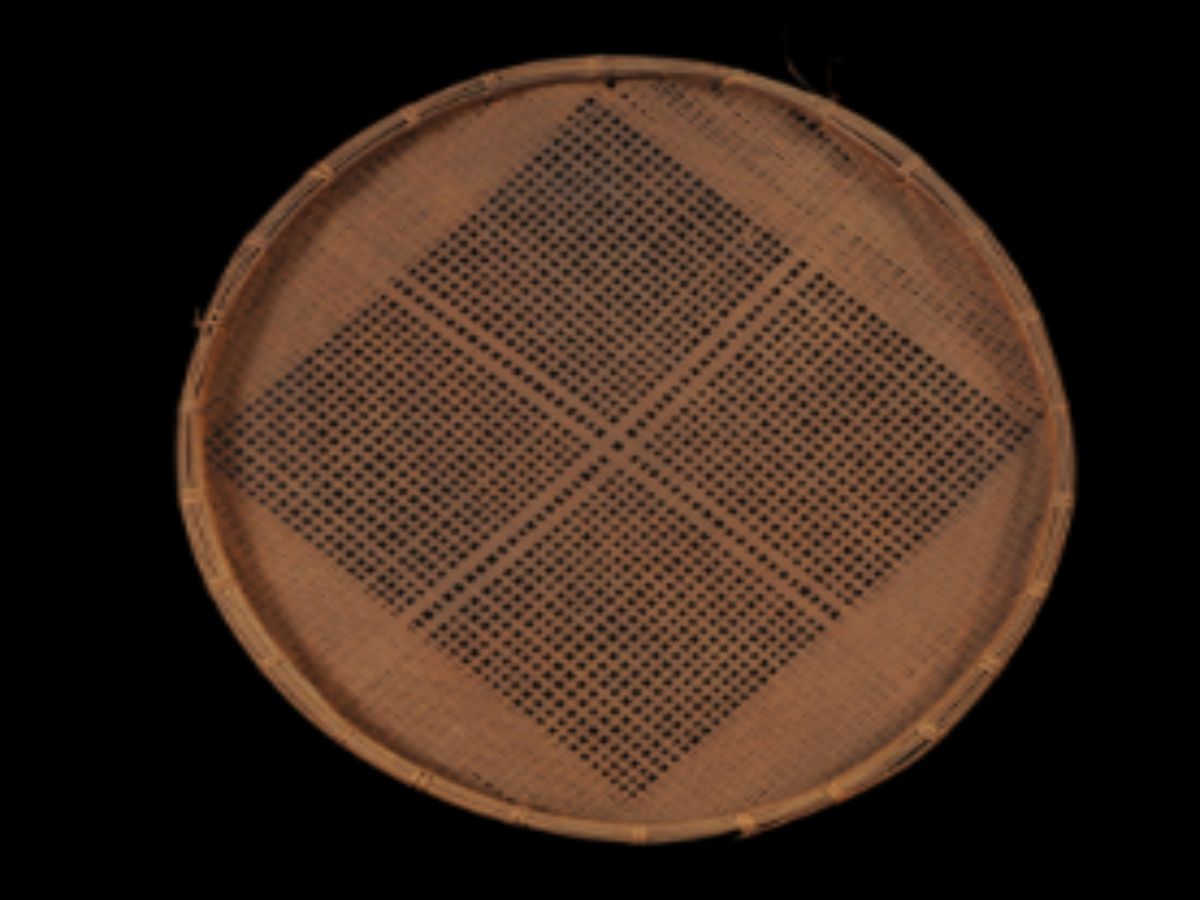State
Tribe Name
Art Type
short description
The circular bamboo sieve is an ancient handmade tool of the Rabha tribe, which is an indigenous community primarily found in Assam and Meghalaya in Northeast India. The Rabhas are people who respect nature and have a rich heritage of bamboo artistry, among which they work objects out of the forest, being used on the cultural aesthetic dimension along with utility. The circular sieve has been made from finely split bamboo strips, a material, which is considered to be one of the best due to flexibilities, strengths, and sustainability. The outer margin base raises up slightly, while cane strips securely tied across lend structural strength and durability to the whole framework. The sieve works during food preparation by winnowing and filtering grains or separating coarse stuff from the fine.
Thumbnail

Filter Postion
Left
Filter Background
Off
Theme
Filter Header Image

content
Image

description
The circular bamboo sieve is an ancient handmade tool of the Rabha tribe, which is an indigenous community primarily found in Assam and Meghalaya in Northeast India. The Rabhas are people who respect nature and have a rich heritage of bamboo artistry, among which they work objects out of the forest, being used on the cultural aesthetic dimension along with utility. The circular sieve has been made from finely split bamboo strips, a material, which is considered to be one of the best due to flexibilities, strengths, and sustainability. The outer margin base raises up slightly, while cane strips securely tied across lend structural strength and durability to the whole framework. The sieve works during food preparation by winnowing and filtering grains or separating coarse stuff from the fine.
What is distinctive about this sieve is its center part, which has been plaited with larger gaps between bamboo splits that would form a large squared pattern with which this part of the sieve lets larger particles slip through. In contrast, the rest of the surface remains tightly and closely plaited, which captures fine grains or sieves smaller particles. Such interplay of weaving varieties displays the intricate weaving skills and functional design understanding of the Rabha tribe. Sustainable practices and the craftsmanship of the Rabhas in agriculture and household utilization come witness to this construction. This kept the sieve as a tool for the hoisting living of rural people in food processing and cultural heritage for the Rabha people.
What is distinctive about this sieve is its center part, which has been plaited with larger gaps between bamboo splits that would form a large squared pattern with which this part of the sieve lets larger particles slip through. In contrast, the rest of the surface remains tightly and closely plaited, which captures fine grains or sieves smaller particles. Such interplay of weaving varieties displays the intricate weaving skills and functional design understanding of the Rabha tribe. Sustainable practices and the craftsmanship of the Rabhas in agriculture and household utilization come witness to this construction. This kept the sieve as a tool for the hoisting living of rural people in food processing and cultural heritage for the Rabha people.
Image Mode
landscape
promoted
On
Verified
Off
